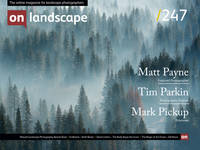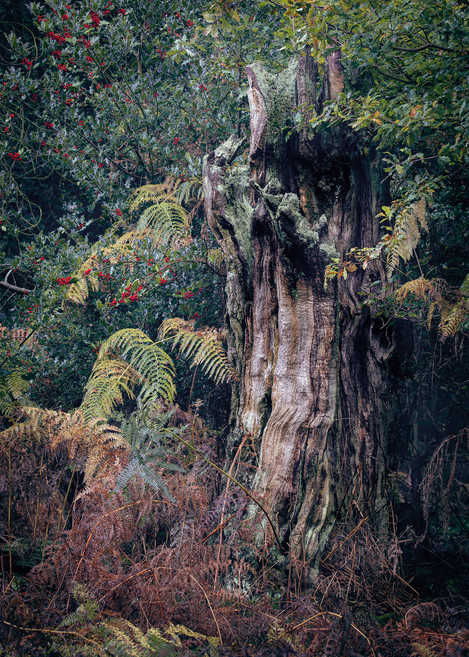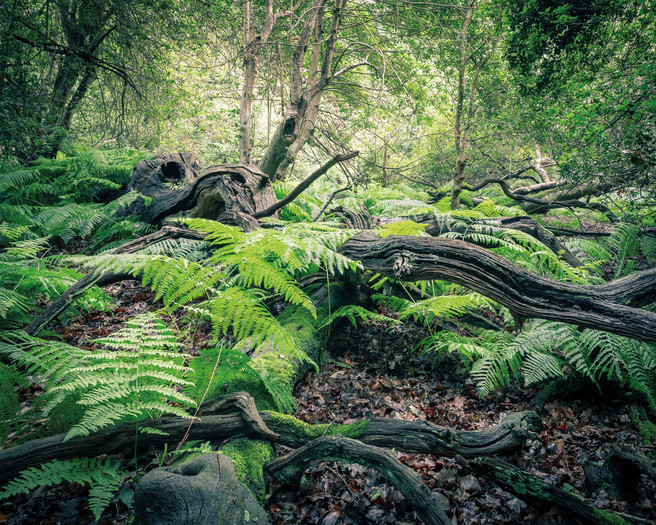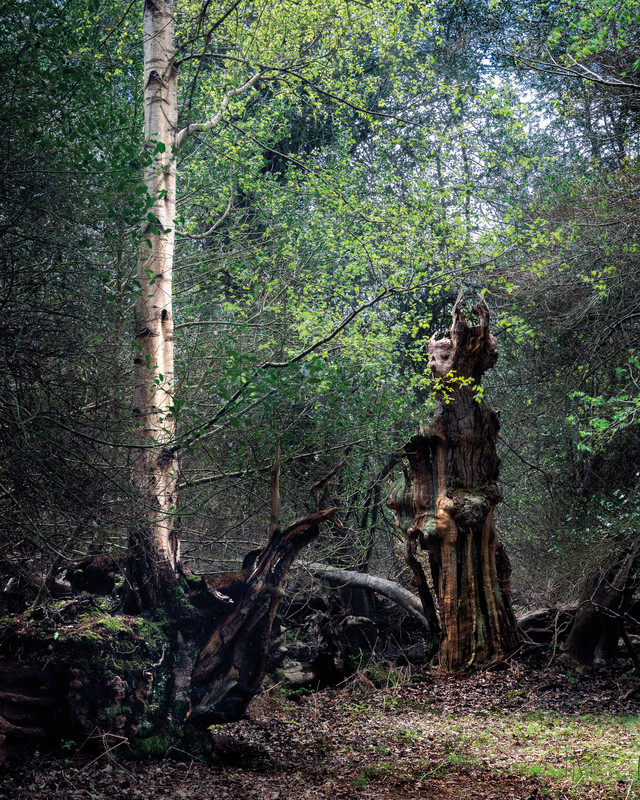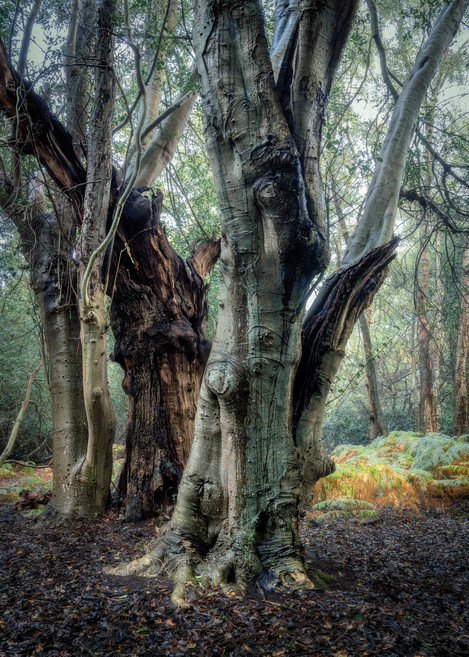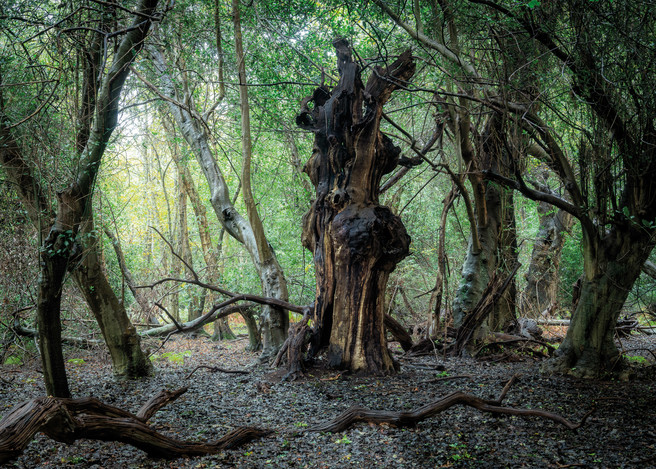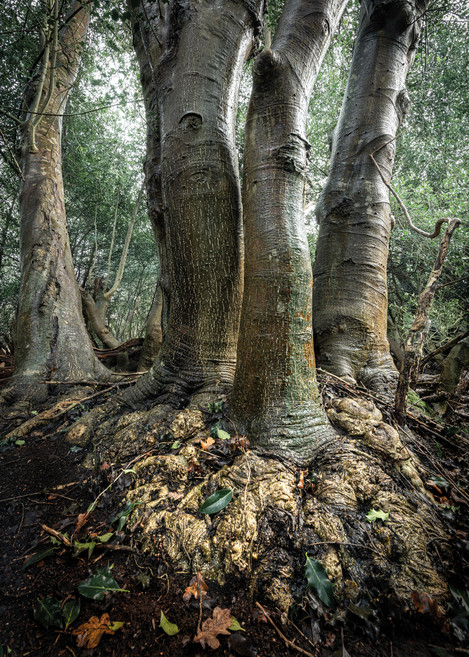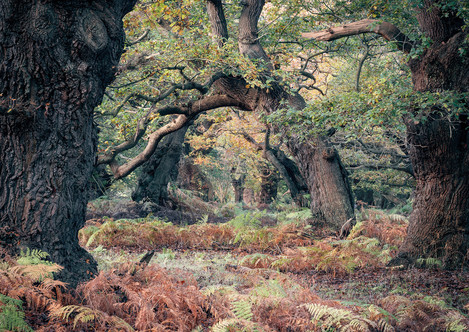A connection between two tree species

Gill Moon
Gill Moon is a professional photographer based on the Suffolk Coast. She specialises in landscapes, waterscapes and marine photography and is passionate about promoting a connection with the environment through her work.
Gill has been taking photographs for most of her life but decided to turn her hobby into a profession in 2010 when she moved to the Suffolk Coast. Her passion for the outdoors also extends to the sea and Gill is an experienced sailing photographer working with the national yachting press and sailing organisations along the East Coast.
Gill’s real passion is the landscape and the natural world and she is increasingly keen to help others foster a connection with both. “For me photography is not just about the technical side of taking a photograph, it is about observation, emotion and portraying a connection with the world around you. These are the things that I believe contribute the most towards creating a compelling image.”
Some wild places have the power to captivate all who visit them, not because they have unrivalled views or superior scenery but because they instil in the visitor a sense of wonder and awe. In 2018 I discovered one such place.
At this time my photography was primarily focused on the coast. I was an experienced yachting photographer and I loved the sea and this was the environment I was naturally drawn to when I ventured out with my camera. However, that all changed when I read a book by Sara Maitland called Gossip from the Forest. It featured a chapter on a local woodland that I had never explored but felt compelled to visit.
First impressions are always important and they are usually what guides me as a photographer. As soon as I stepped off the road and into the cool depths of the wood I knew I wanted to produce a body of work that captured the essence of this amazing location.
The wood is a special place that has been well documented. It has been studied by Oliver Rackham, a leading ecologist of British woodlands, and described by eminent woodland expert George Peterken as being as near to primal forest as anything else in the country. It is an ancient landscape of fairytale qualities where vast oaks, some over 500 years old, stand side by side with some of the tallest holly trees in Britain. Reminiscent of childhood stories, the area is a chaotic tangle of twisted branches where light is sparse and evergreen curtains of holly hang in the air. Dead and decaying boughs and trunks litter the floor and even on the brightest of days the air is cool and the forest dark. The treescape has a Tolkienesque quality revealed in the gnarly shapes of the oaks, the characters imagined in the deadwood and the symbiosis of its compound trees, formed as different species grow on top of one another. For all who enter this magical landscape, mystery abounds and imagination runs wild.
While the wood may have started its life as an oak wood today holly is the dominant species. The evergreen trees are regenerating at a rapid pace and tiny seedlings can be seen all over the woodland floor. But for the oaks, the future is less bright. There has been no successful natural regeneration in the last 100 years and so the dynamics of the woodland are changing. There is a conflict between the hollies and the oaks born from competition for sunlight, which over time has contributed to the enchantment of the forest but will ultimately change its nature forever.
As someone who had never attempted woodland photography before, the ancient forest presented some major challenges, the most difficult being the chaotic nature of the habitat. When I entered the wood for the first time I was confronted by a mass of trees and foliage that felt almost impossible to penetrate. Everywhere I looked the scene was busy and chaotic.
I began by getting to know the wood, visiting with my camera but focusing very much on connecting with the environment and observing the wildlife in its natural habitat. The more I explored the more I felt I understood the landscape and the trees that surrounded me.
There was something very powerful about immersing myself in this ancient oak wood. The gnarly trees have been old for longer than I have been alive and have lived through huge changes in the landscape. Most are between 300 - 500 years old and although they are hollowed and broken and are being crowded out by the surrounding hollies they are still alive and very much part of a vibrant ecosystem.
I was in awe of these trees every time I visited and felt a deep connection with the past and an almost spiritual connection with the wood. This ultimately gave me an idea for the project and influenced the decisions I made regarding photographic style.
I began taking photos in the autumn and deliberately decided to shoot on rainy days when the moisture in the air acted as a filter, simplifying the background but at the same time saturating the colours of the vegetation.
From my initial visits in the autumn of 2018, I produced a panel of 6 images that I felt showed the enchantment of the forest but also hinted at the dark and chaotic nature of the habitat. I entered this panel into the Royal Horticultural Society (RHS) photography competition and was shortlisted to exhibit at the Art and Photography show which took place at the Saatchi Gallery in London. I was thrilled to be awarded a Silver - Gilt medal for my work and inspired to put together a book that told my story of the forest.
By this time I had been visiting and photographing the wood for two years. I had built up a huge collection of images across all four seasons and in very different weather conditions. However, I didn’t want to produce a book that told a chronological tale through spring, summer, autumn and winter. Instead, I chose to tell a story of a connection between two tree species (holly and oak) and also between man and the natural world.
As a regular visitor to the wood and an observer and lover of the natural world, the wood seemed to me to display many characteristics of a human community. It is rooted in time, and nature, connected spirituality (particularly in the past) to those that live among it, made vulnerable by change and afflicted by conflict and mortality. It is these characteristics that I chose to form the structure of my story.
The result is my book Rooted which I published at the beginning of December. Although this is principally a tale about a special area of ancient woodland it is also a personal story of the connection between myself as a photographer and the landscape I work in.
The wood is somewhere that has had a profound effect on me since I first visited in 2018. It has shaped my art and has provided me with a peaceful natural refuge to explore with my camera.
Whilst my images took just over two years to gather the words for the book were written in 2021 in the run-up to and during the international climate summit COP26 which took place in Scotland.
With the news coming out of Glasgow on a daily basis I found myself drawing comparisons between the threats the planet faces and those currently affecting the wood. Rooted is a story of an ancient place, battling for survival in its current form and one that in many ways mirrors man's own story.
I very much hope that I have succeeded in portraying, through my images, the magic and fragility of the woodland and my deep love for this awe-inspiring habitat.
You can buy Rooted from Gill's Website, £28

